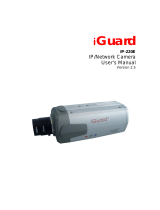
-2-
Table of Contents
Introduction..................................................................................................4
Functions and Features.........................................................................4
Introduction to Broadband Router Technology....................................6
Introduction to Firewalls ......................................................................6
Introduction to Local Area Networking ...............................................7
Introduction to Virtual Private Networking..........................................7
Contents of Package .....................................................................................9
Panel Layout...............................................................................................10
Installation Requirements...................................................................11
Network Settings ........................................................................................12
Configuring the Ethernet Broadband Router..............................................14
Start-up and Log in.............................................................................14
Device Information.............................................................................16
Useful Tools........................................................................................17
Setup ...................................................................................................18
DHCP Server ......................................................................................21
Virtual Server......................................................................................22
Special Applications ...........................................................................23
Access Control....................................................................................24
Miscellaneous Items ...........................................................................25
MAC Address Control........................................................................26
Configuring on Unix based Platforms................................................27
Appendix A: Resetting the System Password or the IP Address .............28
Appendix B TCP/IP Configuration for Windows 95/98 ..........................29


















